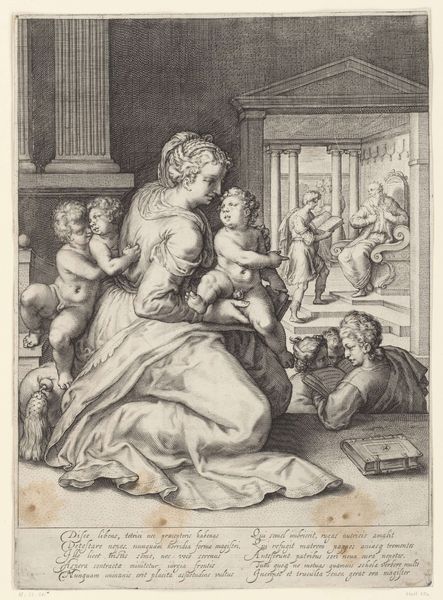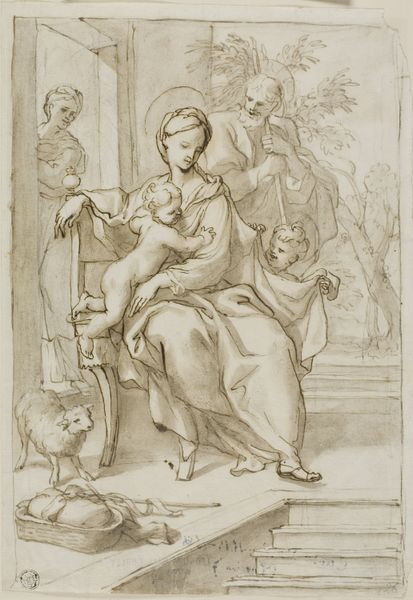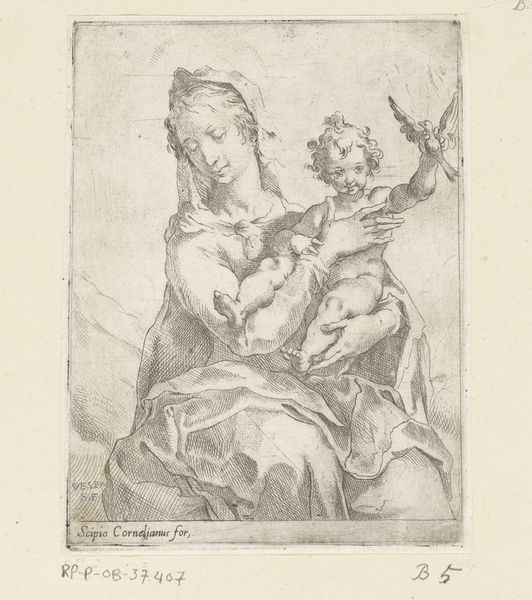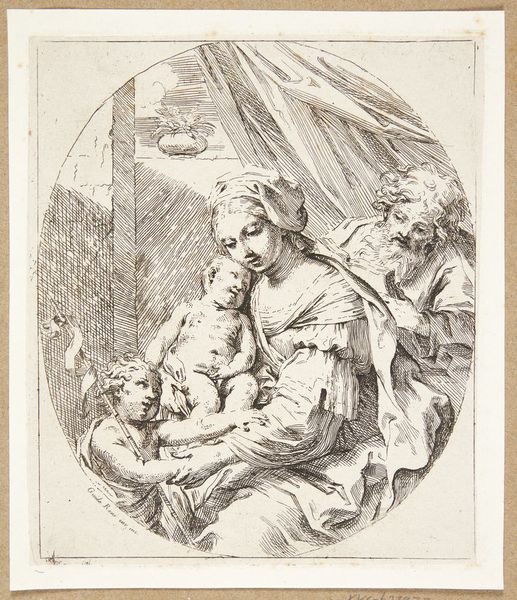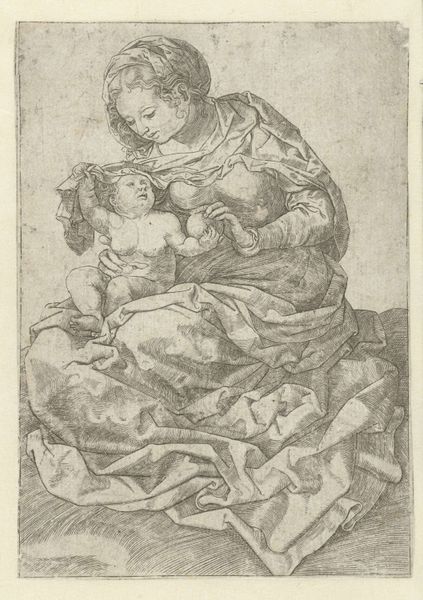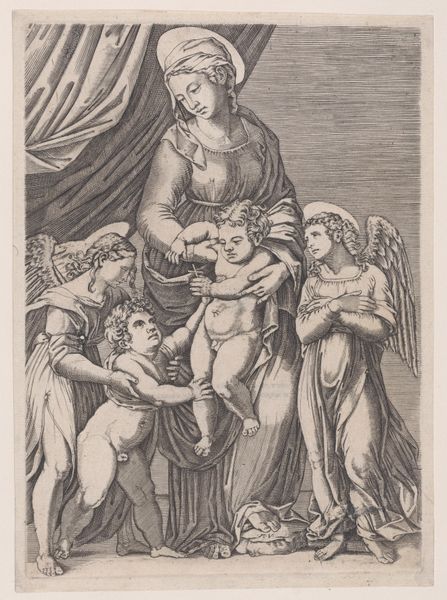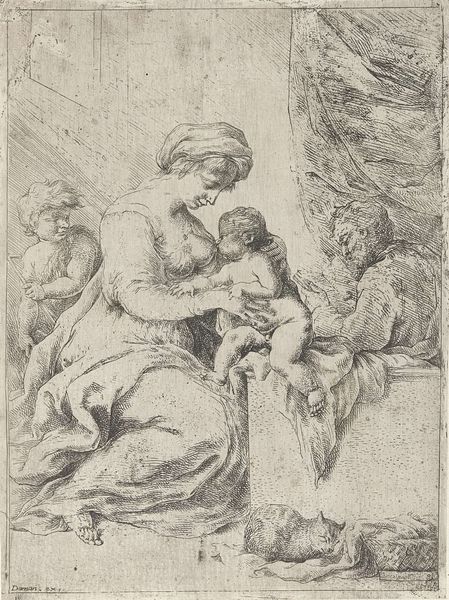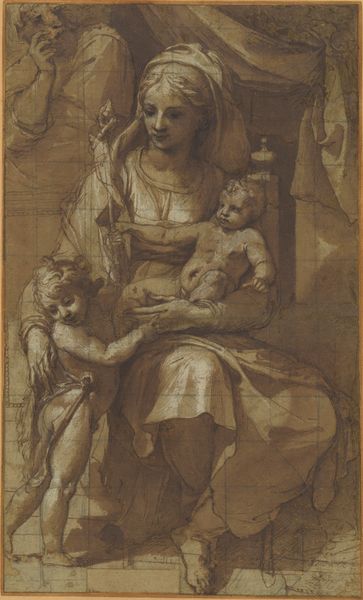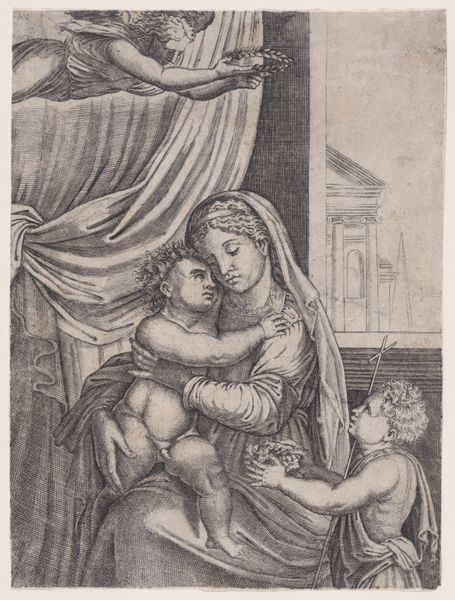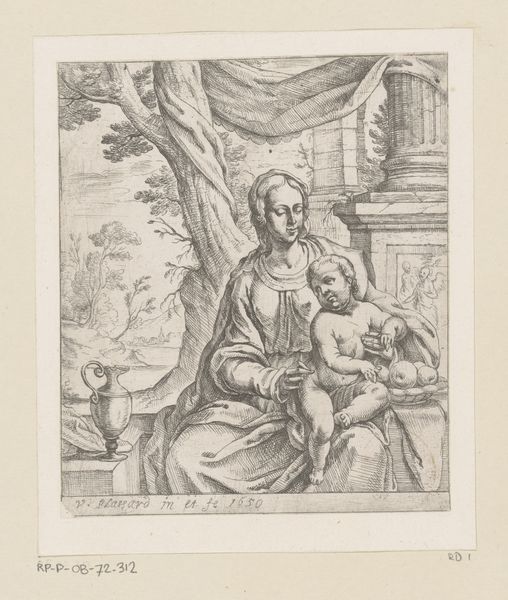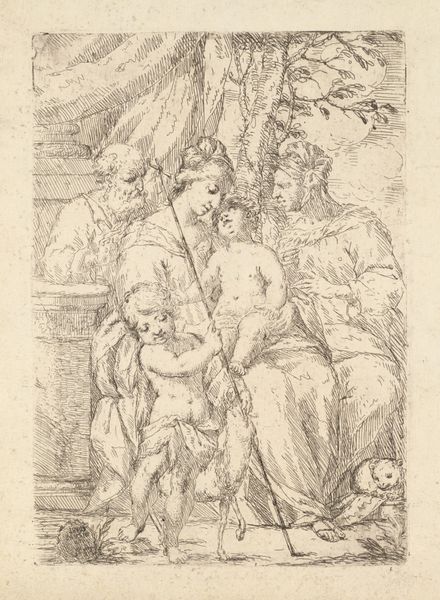
drawing, paper, ink
#
drawing
#
allegory
#
baroque
#
figuration
#
paper
#
ink
#
genre-painting
#
nude
Dimensions: height 260 mm, width 240 mm
Copyright: Rijks Museum: Open Domain
Curator: Here we have "Liefde (Charitas)," or "Love (Charity)," a drawing rendered in ink on paper by Barend Graat, dating roughly from 1638 to 1709. The drawing depicts a seated woman surrounded by children. Editor: My first impression is one of classical repose disrupted by lively movement. The mother figure emanates a serene monumentality, while the surrounding children introduce a chaotic, almost urgent energy into the composition. Curator: Yes, there's a clear juxtaposition at play. Consider the lines. Graat employs delicate, almost feathery lines to define the drapery and architectural elements, creating a sense of ethereal grace, whereas the children, with their bolder, more emphatic lines, seem grounded, almost corporeal. Editor: I am also compelled by the labor invested in the making of this artwork. From the sourcing of the materials to the drafting and careful construction, a deep study of craft seems undeniable. One must recognize how the work and material conditions affected the artist's touch. Curator: And consider the symbolic construction—this is hardly a candid scene of domestic life! The allegorical figure of Charity, represented by the nursing mother and her offspring, is framed by classical architecture, lending a sense of timeless universality to the theme. Graat utilizes the artistic language of the Baroque to explore universal values through compositional and figurative harmony. Editor: The act of drawing itself is an engagement with social structures. Paper as material bears witness to that production. Consider the potential uses of ink as material: was this iron gall or India ink? The type employed gives further insight into production methods available at the time and trade economies that permitted accessibility to such tools. Curator: I'm struck by the drawing's enduring capacity to evoke feelings of both tranquility and vitality. Through this symbolic arrangement of serene form against spirited motion, the artist expresses the power of love as a transcendent ideal. Editor: Yes, there are echoes of an economic undercurrent: production and material consumption, shaped and highlighted by artistry! These things together bring new insight into the themes presented in "Liefde."
Comments
No comments
Be the first to comment and join the conversation on the ultimate creative platform.
